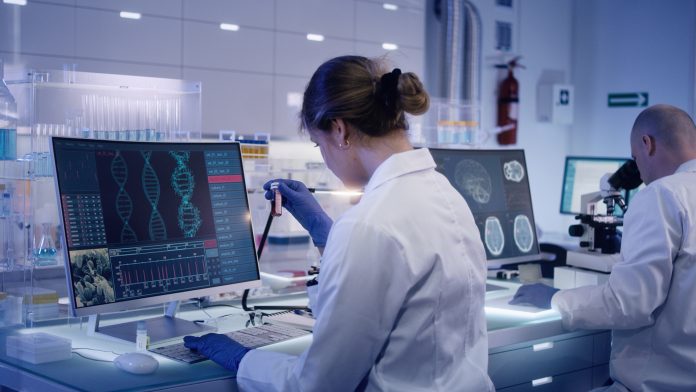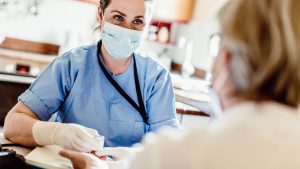
Claire Wallace outlines how advancing the use of medical diagnostics could improve the detection of diseases and delivery of care, but says we must strike a balance between identifying high-risk individuals and avoiding a surge of enquiries that would overwhelm the healthcare system.
The need to have fast and accurate medical diagnostics to combat COVID-19 has dominated the news cycle over the past two years. By diagnosing individuals quickly and accurately, health systems were able to intervene early to monitor the propagation of the virus. This rationale can, and should, apply to the monitoring and prevention of other diseases. We should leverage lessons from the pandemic to embed innovative diagnostic processes to identify and treat high-mortality conditions earlier.
COVID-19 magnified and promoted the innovative work-life sciences companies’ drive each and every day. It also uncovered fundamental issues in global public health coordination and within national health systems, including staffing shortages, lack of funding, and barriers to integrating advanced health technology into patient care. These challenges affect preventative patient care causing delays in treatment and poor outcomes.
Taking cancer as an example, the pandemic caused significant disruption to patient screening and the ability to undertake routine blood tests and ultrasounds. As an unfortunate result, efforts to diagnose disease at an earlier stage have been hindered, resulting in more late-stage diagnoses and higher mortality rates.
Even before the pandemic, health experts were struggling to identify other serious illnesses, such as sepsis. Unless diagnosed and treated early, sepsis can lead to septic shock, multiple organ failure and death. The prevalence of sepsis over recent years has substantially increased, with the WHO estimating that sepsis is linked to one in five deaths worldwide.
Improvements to medical diagnostics are still need
While significant progress has been made in recent decades to better understand the mechanisms of sepsis, there are still many gaps to be filled regarding medical diagnostics and therapeutics of sepsis and septic shock.
Policymakers and clinicians also need to be careful to balance the immediate dangers of sepsis with widespread antibiotic use and the longer-term problems this can generate in relation to antimicrobial resistance (AMR). The current ‘better safe than sorry’ approach to diagnosing and treating sepsis is imperfect and can result in arbitrary antibiotic use and an increased risk of adverse events.
One of the potential solutions to diagnosing sepsis more accurately and reducing the use of antibiotics is adopting biomarker tests that can help differentiate between viral and bacterial infections. There are also new processes available that can rapidly identify the antimicrobial susceptibility of bacteria. Health systems across the world should be looking to adopt these diagnostic tools both to improve the treatment of sepsis and to reduce AMR.
Health systems must build the infrastructure and pathways that identify and test certain cohorts of patients. This would allow for faster diagnosis of potential issues and optimise the treatment plan early. The advancement of medical diagnostics not only provides clarity for the individual but also relaxes the pressures on already strained health services.
A price worth paying
Improving medical diagnostics requires the development, trial and approval of new technologies and a plan for how technologies can be best leveraged and scaled within healthcare systems. It is crucial to first invest and create the infrastructure that allows local services to access equipment and data efficiently. Creating this new infrastructure is a challenge that governments need to address. It inevitably comes at a cost, but when the payoff is better health outcomes and longer survival rates, the benefits outweigh the cost.
For example, it is encouraging that innovation in medical diagnostics has been part of the NHS Long-Term Plan (2019) and highlighted the importance of connecting medical diagnostics. This goal was given further backing as part of the Review by Professor Sir Mike Richards into NHS medical diagnostics capacity. This reiterated the need for “radical investment and reform of diagnostic services” and suggested additional measures in response to the onset of COVID-19, which he said had “amplified the need for radical change.”
The investment comes at a time during which there is a growing appetite from people to understand more about the predictive signs of future conditions. The right balance needs to be struck between screening to identify high-risk individuals and not creating a swell of enquiries into national health systems.
Building on best practice from the pandemic
The pandemic taught us that infectious diseases are a ‘whole of society issue’ and the enforced lockdown required health systems to rethink how to deliver services and care. Expectations and norms changed for people as well – self-testing in homes became commonplace.
There is a role here for industry to partner with public health bodies to build on this behavioural shift to democratise healthcare and develop a system that encourages people to take greater ownership of their health.
One route to this is ensuring funding remains to continue the operations of the Lighthouse Laboratory network– used to efficiently process COVID PCR tests. Many Lighthouse Labs have been downscaled but the trusts and universities that delivered them continue to work in partnership with Academic Health Sciences Network (AHSNs) and industry. There is untapped potential at the largest Lighthouse Lab – the Rosalind Franklin Institute – and other strategically important hubs around the UK such as Alderley Park in Cheshire and Glasgow; the challenge is to predict fluctuating demand and use the capabilities of this impressive lab network to diagnose other conditions.

We have learned lessons from the pandemic – most notably, that leveraging technology and automated lab medical diagnostics can drastically increase testing throughput in times of extreme variability of demand. This is a critical capability development that can help national health systems not only address pandemic needs, but also help with diagnosis and treatment of other pressing health conditions. That is why I welcome the recent announcement by the UK government to invest £248 million to adapt the way professionals work, including increasing digital medical diagnostics capabilities, and improving connectivity between different parts of the system to get patients on the right pathways more quickly. This is a great example of government learning from the pandemic, especially in terms of cooperating with the private sector.
Furthermore, the UK Life Sciences Vision – the blueprint for facilitating greater health technology innovation and adoption within the NHS – emphasises the importance of new diagnostic capabilities, for example harnessing the potential of genomics and how this links with the most significant health conditions such as cancer, neurodegenerative conditions and cardiovascular disease. A refresh of the vision is due in the coming months, and it would be encouraging to see a plan for how new diagnostic innovations can be incorporated into everyday use within the health system, plus those that were used to such good effect during the pandemic such as PCR testing.
It is an exciting time for the life sciences sector with opportunities to build on the learnings of the pandemic. We need to continue to build and leverage our capabilities and scale as an industry to support our health systems with increased disease prevention and treatment requirements. Thermo Fisher Scientific will continue to collaborate with industry, government, and health systems to help translate medical diagnostics best practice into broad-scale solutions.
Claire Wallace
President, Microbiology, Specialty Diagnostics Group
Thermo Fisher Scientific
http://www.thermofisher.com/
https://www.linkedin.com/in/claire-wallace-149514184/?originalSubdomain=uk
This article is from issue 23 of Health Europa Quarterly. Click here to get your free subscription today.










